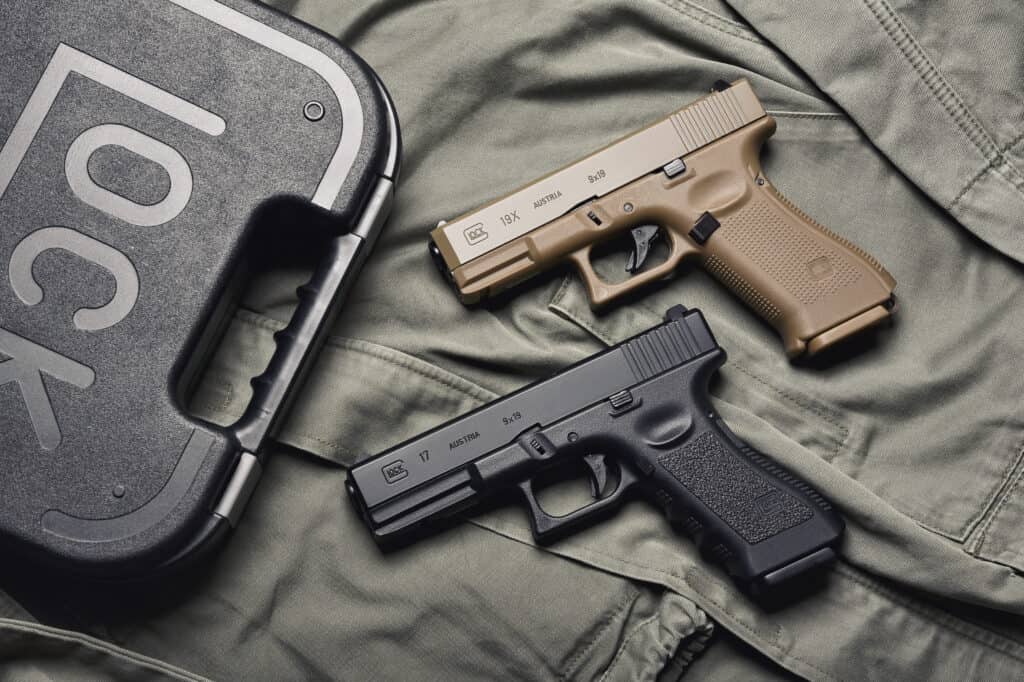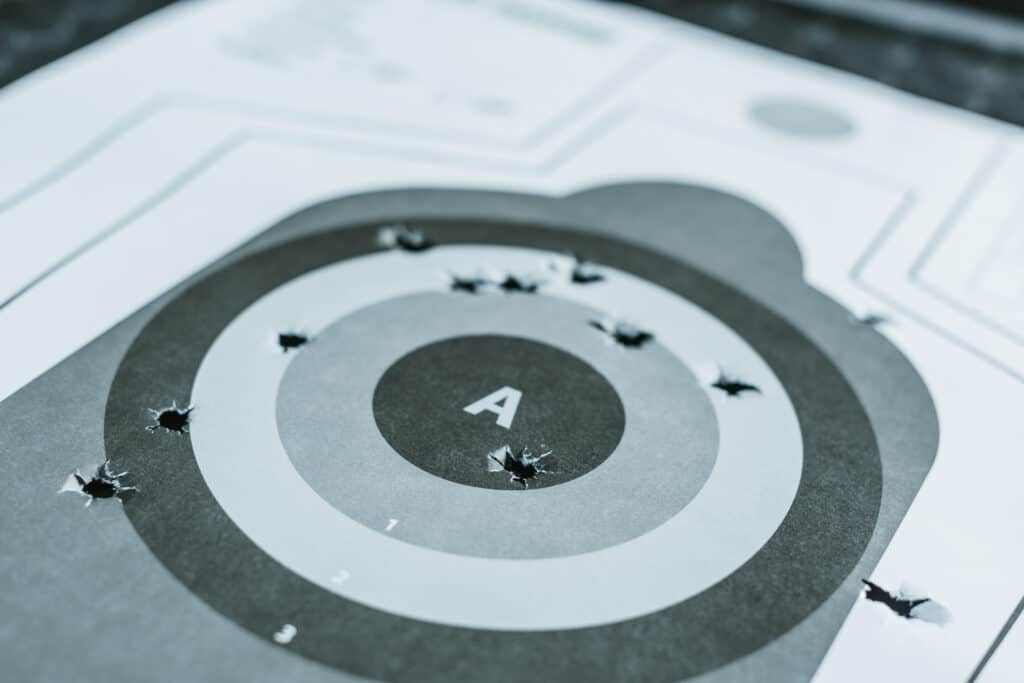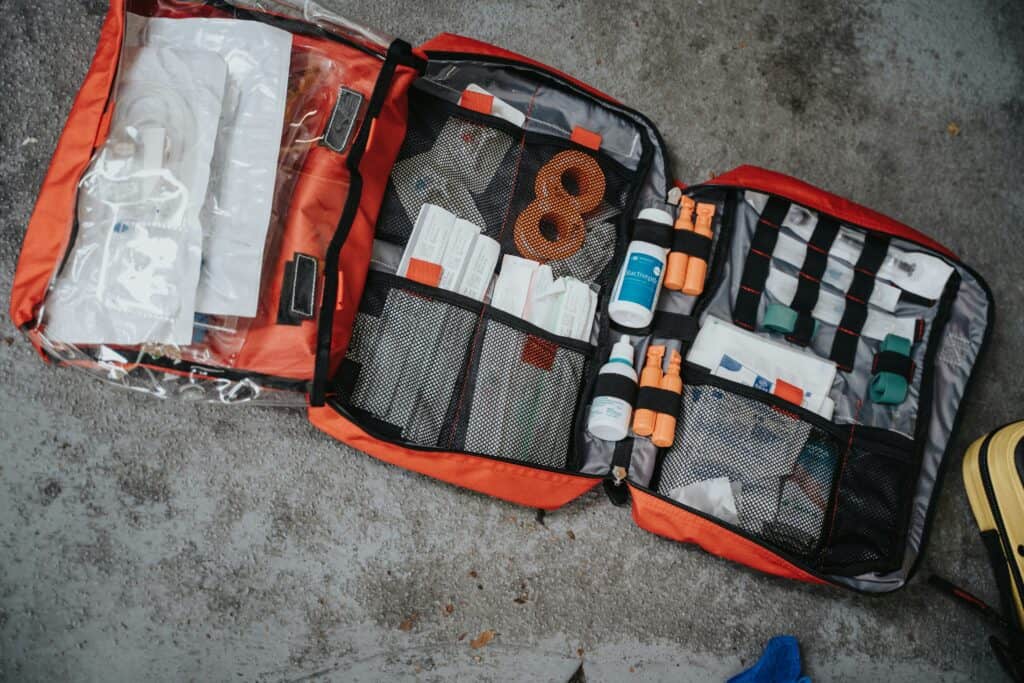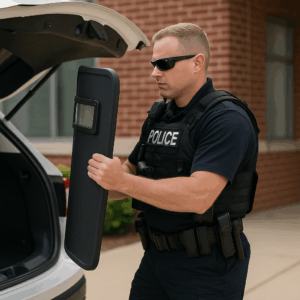Firearms training is essential for ensuring the safe, responsible, and proficient use of firearms, whether for personal protection, sport, or in a professional capacity. The frequency of firearms training should be tailored to the individual’s needs and goals, as well as their proficiency level and the intended use of the firearm. While there isn’t a one-size-fits-all answer to how often firearms training should occur, there are some general guidelines and recommendations.
A 2015 survey found that approximately 61% of firearm owners in the United States have received formal training on firearm safety and use. However, the frequency with which individuals participate in training can greatly vary. For some, regular training sessions are necessary to maintain and develop their skills, while others may feel that less frequent training is sufficient.
When determining the appropriate frequency for firearms training, it is important to consider factors such as the individual’s current skill level, the type of firearm being used, and the specific activities or situations that the training will prepare them for. Ultimately, the goal of firearms training is to promote safe and responsible gun ownership, and tailoring the frequency of training sessions to individual needs will help achieve this objective.
Firearms Training Fundamentals
Firearms training is an essential aspect of maintaining proficiency and ensuring the safe handling of firearms. To develop a solid foundation in firearm handling, it is crucial to focus on the fundamentals. These fundamentals encompass various aspects of training, such as safety, loading and unloading, shooting techniques, and the use of live ammunition.
Safety is the cornerstone of any firearms training program. At the basic level, it involves understanding the proper handling and storage of firearms, as well as the best practices to keep them away from children and vulnerable individuals. Every participant in firearm training should be well-versed in the four primary rules of gun safety: treat every firearm as if it were loaded, never point the muzzle at anything you’re not willing to destroy, keep your finger off the trigger until your sights are on the target and you’ve made the decision to fire, and be aware of your target and what’s beyond it.
When loading and unloading a firearm, it’s important to be familiar with the specific firearm’s mechanisms. This generally involves inserting rounds into a magazine, loading the magazine into the firearm, and chambering a round. When unloading, the process is typically reversed, with the shooter removing the magazine, ejecting the chambered round, and safely verifying that the firearm is clear of any live ammunition.
Shooting techniques are another crucial aspect of firearms training. This includes learning the proper stance, grip, sight alignment, sight picture, trigger management, breathing, follow-through, and recovery. These techniques contribute to improved accuracy, consistency, and overall shooting performance. In addition to these fundamentals, shooters should also focus on mastering their draw or presentation, as well as transitioning between targets and engaging in various shooting positions.
Using live ammunition in firearms training is vital for developing real-world skills and familiarity with the firearm’s recoil and noise. However, it is essential to prioritize safety and adhere to the range rules and regulations when employing live rounds. As part of their training, participants should learn how to identify different types of ammunition and understand the compatibility between specific rounds and their firearms.
The fundamentals of firearms training cover a wide array of skills and techniques that contribute to increased safety, efficiency, and proficiency in handling firearms. Continual practice and emphasis on these principles will result in confident and knowledgeable firearm users who can employ their weapons effectively and safely in a range of situations.
Frequency of Training
In the context of firearm training, frequency plays a crucial role in ensuring the safe and proficient use of firearms. The International Association of Chiefs of Police suggests that firearms training should preferably be held three times a year. However, legal experts often argue that annual or even semi-annual training may be insufficient for avoiding liability. Keep in mind, liability should not be your only driver for training.
When considering the training frequency for defensive gun use, it is essential to maintain an appropriate balance between proficiency and accessibility. Daily practice or several training sessions each week, even for just 10 or 15 minutes, can help maintain the neuromuscular pathways that connect muscles to the brain. This frequent engagement allows for the development and reinforcement of essential skills and muscle memory.
Goals play a vital role in determining the appropriate frequency of firearms training. For law enforcement officers, the focus is on ensuring both safety and accuracy in high-pressure situations. For civilian concealed carry permit holders, training requirements vary greatly across states, with some states requiring applicants to demonstrate a specific accuracy level before receiving a permit. In either case, firearm training should be customized to the needs and demands of the trainee, taking into consideration individual skill levels, purposes of use, and situational demands.
Ultimately, the frequency of firearms training should be guided by a combination of factors, including legal requirements, personal goals, and the importance of maintaining confidence, knowledge, and proficiency in using firearms. By balancing these elements and embracing a neutral and clear attitude toward training, participants can ensure that they are equipped with the necessary skills for safe and effective firearm use.
Professional Training
Firearms training is essential for both police officers and civilian gun owners to ensure safety and proficiency in handling and using firearms. Professional training typically consists of a combination of classroom instruction and hands-on experience at a shooting range.
Police firearms training is an important aspect of the law enforcement profession. As mentioned above, the International Association of Chiefs of Police suggests that officers should preferably be participating in firearms training three times a year. Police firearms training not only includes live-fire exercises, but also scenario-based training, weapon maintenance, and use of force decision-making.
For civilian gun owners, the frequency of firearms training can also vary depending on the individual’s experience and requirements. Some states, like Maryland, have specific requirements for obtaining a concealed carry permit. In Maryland, applicants must demonstrate 70 percent accuracy while firing at least 50 rounds from a distance of no more than 25 yards.
A professional firearms trainer generally has extensive knowledge and experience in handling various types of firearms. Classroom instruction often focuses on topics such as firearm safety, types of firearms and ammunition, legal issues, and storage and transportation of firearms. Hands-on training at the shooting range allows the individual to practice their shooting techniques and receive immediate feedback from the instructor.
Ensuring that professional firearms training is consistent and frequent is essential for maintaining the skills and knowledge needed to responsibly own and use a firearm, whether it be for law enforcement or civilian purposes. Providing proper training helps reduce the risk of accidents and ensures that individuals are prepared to handle various situations that involve firearms.
Firearms Types and Training
Handguns
Handguns are ideal for concealed carry due to their small size. They come in various calibers, such as 9mm, .40 S&W, and .45 ACP. It’s essential to practice with handguns to become proficient in their handling and use, especially if it’s for self-defense. For civilians, the recommendation is to train with your handgun at least once a month, with additional practice whenever possible. Be sure to incorporate dry fire training into your routine.
Rifles
Rifles are often used for hunting, sport shooting, and defense applications due to their long-range accuracy. Firearms like the AR-15 have become popular am for their customization options and versatility. Rifle training should focus on maintaining a proper shooting stance, developing sight picture, and understanding bullet trajectory. Depending on the purpose of the rifle training frequency could vary from once a week to once a quarter.
Shotguns
Shotguns are widely used for anything from home defense to hunting because of their stopping power and versatility in ammunition types. Training with shotguns can be quite different from handguns or rifles, as they require unique handling, maintenance, and firing techniques. Building proficiency with a shotgun will involve practicing proper stance, loading and unloading, and understanding the different chokes and ammunition types, from birdshot to buckshot and slugs. Similar to rifle training, shotgun training frequency should be based on an individual’s needs and expectations, ranging from once a month to once a quarter.
Developing Skills and Proficiency
Firearms training is essential for individuals who handle guns, as it helps develop skills and proficiency in various aspects of gun operation and safety. Regular training sessions can improve trigger control, reloading, drawing from concealment, and demonstrating safe handling techniques.
Trigger control is a fundamental skill that involves maintaining steady pressure on the trigger until the shot is fired. This ensures accuracy and minimizes the chance of unintentional discharge. Practice is vital in developing and maintaining good trigger control.
Reloading is another critical skill that requires regular training. Efficient reloading can make a big difference in high-pressure situations, as smoothly and quickly refreshing ammunition can be crucial. It is essential to train in various reloading techniques, such as tactical reloads and emergency reloads, to be prepared for various situation types.
Drawing from concealment is an important skill, particularly for those carrying concealed firearms for personal protection. Efficiently and safely drawing a firearm from a concealed position can be a lifesaving skill in self-defense scenarios. Practicing this skill ensures proficiency, reducing the time it takes to draw and aim the firearm when needed.
Demonstrating safe handling techniques is also crucial for all firearm users, regardless of their experience level. This includes proper muzzle discipline, trigger finger discipline, and following the basic rules of firearm safety. Regular training in these areas ensures that good habits are ingrained and can help prevent accidents.
To ensure progress and improvement, it is essential to engage in consistent firearm training. This not only ensures that skills stay sharp but also enhances safety and confidence when handling firearms.
Safety Measures

Firearm safety training courses aim to educate individuals on the correct operation, safe handling, and maintenance of firearms. These courses also provide knowledge on firearm laws and regulations, as well as best practices for keeping firearms away from children or other vulnerable individuals.
One important aspect of firearm safety is safe storage. Safe storage practices include using a gun safe to prevent unauthorized access. A gun safe is a secure and protective storage container for firearms, ensuring that only authorized users can access the stored weapons. It is essential for gun owners to invest in a reliable gun safe and to keep the combination or key secure.
In addition to safe storage methods, hearing protection is crucial during firearm training and usage. Exposure to loud noises, such as gunshots, can result in permanent hearing damage. Consequently, wearing appropriate hearing protection, like earmuffs or earplugs, is necessary when shooting.
Developing and maintaining safe habits when using firearms is another key component of firearm safety. Some examples of these habits include:
- Always treating firearms as if they are loaded
- Keeping the finger off the trigger until ready to shoot
- Always pointing the firearm in a safe direction
- Being aware of the target and what lies beyond it
Establishing these habits helps minimize the risk of accidents and ensures a safe environment for everyone.
Consistent training increases the likelihood of remembering safe practices, reducing the chance of unintentional injuries.
Legal and Liability Aspects
When it comes to firearms training, legal and liability aspects cannot be ignored. The courts play a significant role in determining the adequacy of training programs by assessing their relevance to the tasks that officers and gun owners must perform. Inherent to this process is the evaluation of both proficiency and judgment.
Liability for inadequate training can extend to municipalities, as evidenced in cases like Allen v. City of Muskogee and Carr v. City of Oklahoma City. In these instances, a municipality may be held liable if its failure to provide appropriate training represents a deliberate indifference to the constitutional rights of citizens. This has major implications for police officers and their respective departments.
The National Shooting Sports Foundation (NSSF) recommends that firearms training for civilian gun owners should be a continuous and ongoing process. This is mainly due to the ever-changing laws and regulations surrounding the use of firearms. In addition, proper training and practice are essential for maintaining safe handling and operational skills. This ensures that gun owners are well-equipped to face various situations, therefore minimizing potential legal liabilities.
Moreover, the importance of regular training extends to police officers and other public safety personnel. The Office of Justice Programs highlights the need for frequent training and accurate documentation to reduce firearms training liability. Documenting training sessions helps establish a solid foundation for the defense in potential lawsuits. This practice coupled with robust training programs allows law enforcement agencies to foster a safer environment and mitigate risks of legal liability.
It is imperative for both gun owners and law enforcement personnel to engage in continuous and comprehensive firearms training. By doing so, they not only enhance their skills and understanding of firearm usage but also limit legal liabilities that may arise from inadequate or outdated training.
Cleaning and Maintenance
Regular cleaning and maintenance of firearms are essential to ensure their safe and reliable operation. A well-maintained firearm is less likely to experience stoppages or malfunctions, which can be potentially dangerous in a training or real-life scenario.
Firearms should be cleaned after every use to keep them in top condition. This helps ensure that the action functions safely and correctly, and the ammunition performs as it should. It is crucial to establish a routine for cleaning, as neglecting this aspect can lead to decreased performance and even premature failure of the firearm.
Different firearms may require specific cleaning procedures or products, so it is essential to consult the owner’s manual or seek guidance from an experienced professional. Generally, cleaning includes disassembling the firearm, inspecting for signs of wear, applying cleaning solutions to remove fouling, and lubricating moving parts as necessary.
Stoppages refer to incidents when a firearm fails to fire, feed, or eject ammunition correctly. These can result from various factors such as the buildup of dirt and fouling, incorrect loading, or damaged parts. A well-maintained firearm minimizes the chances of stoppages. Regular inspection can help identify potential issues and replace worn or damaged components before they lead to a stoppage during training or actual use.
Malfunctions are any mechanical failures within the firearm that prevent it from firing or functioning as intended. These can be a result of poor maintenance, manufacturing defects, or even failure of external parts, such as magazines or ammunition. By routinely inspecting and cleaning a firearm, it is possible to identify and address potential issues before they escalate into significant malfunctions.
In conclusion, proper cleaning and maintenance of firearms are vital to ensure their safe functioning and prevent stoppages and malfunctions. Establishing a regular cleaning routine, following manufacturer guidelines, and thoroughly inspecting firearms after every use can go a long way in preserving their reliability and performance during training and real-life scenarios.
Frequently Asked Questions
How frequently do police practice shooting?
Police officers practice shooting at different frequencies depending on the department’s policies and regulations. Some departments require officers to undergo firearms training and qualification several times per year. However, it’s essential for individual police officers to practice their firearm skills regularly to maintain proficiency.
What is the recommended frequency for range visits?
The recommended frequency for range visits varies depending on the individual’s goals and skill level. New gun owners or those in need of improving their skills should consider visiting the shooting range more frequently. Experienced shooters may find a monthly visit sufficient to maintain their abilities. Ultimately, the frequency of visits should be tailored to the individual’s progress and needs.
What is the ideal amount of firearm training for police officers?
There isn’t a definitive answer to the ideal amount of firearm training for police officers, as the necessary training depends on the officer’s duties and department guidelines. However, a well-rounded training program should include a mix of classroom instruction, live-fire training, and scenario-based exercises. Regular training is crucial to maintain the officer’s proficiency and confidence in using their service weapon.
What are the guidelines for service weapon discharge?
Guidelines for service weapon discharge vary depending on the jurisdiction and departmental policies. However, a common principle across law enforcement agencies is that officers should only use their firearms when they have a reasonable belief that lethal force is necessary to protect themselves or others from the imminent threat of death or serious bodily harm. Officers must understand and follow these guidelines to avoid unnecessary use of force.
How often do law enforcement officers engage in shooting incidents?
The frequency of law enforcement officers engaging in shooting incidents varies depending on the jurisdiction and the specific duties of the officers. Statistics show that a majority of officers will never fire their weapon in the line of duty. However, it’s essential for officers to be prepared for the possibility of a shooting incident, as the job entails unpredictable situations.
Does regular firearms training impact proficiency?
Yes, regular firearms training significantly impacts proficiency. Studies have shown that gun owners who have received safety training are generally more skilled and knowledgeable in the safe handling and operation of firearms. Consistent practice helps maintain and improve essential skills such as accuracy, speed, decision-making, and muscle memory. As a result, it’s crucial for both law enforcement officers and civilian gun owners to engage in ongoing firearms training to ensure the safe and effective use of their weapons.








